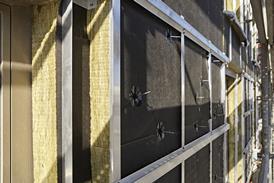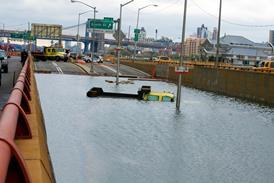The National and Scottish Vocational Qualification (NVQ/SVQ) in Fire, Security and Emergency Alarm Systems Level 3 Award has been designed to provide the basis for assessment of competencies required in employment. The awards have been designed jointly by the industry and NTO standards setting body.
Who is the award for?
The award is for those working within the security systems industry in the disciplines of installing, maintaining, commissioning and servicing of:-
Structure of the Award
NVQs comprise a specified grouping to Units of Competence. Competence is the ability to use acquired skills consistently and to apply knowledge and understanding to routine and non-routine situations.
The Occupational Performance Standards for the Level 3 NVQ in Security Systems Technical Services is made up of eight Units of Competence. To achieve the qualification the four core units (units 1 to 4) must be completed together with one of the optional units (units 5 to 8). This makes a total of five units to achieve the award. As you will have noticed, this level 3 award is a core plus options approach, as the level 2 1870 is. This allows candidates the flexibility to choose their specialist option.
Below are the unit titles
1. Contribute to the Maintenance of a Safe Working Environment
2. Communicate Effectively with Others
3. Audit Installed System
4. Manage Information for Action
5. Service and Maintain Systems
6. Commission and hand over Operational System
7. Install a Complete System
8. Install and Test System Equipment which uses Data Transmission
The Key Purpose of the qualification is to "Contribute to the Optimum Performance of Fire, Security and Emergency Systems".
Units of Competence.
Below are the units of competence headings broken down in to their elements.
1. Contribute to the Maintenance of a Safe orking Environment
1.1. Ensure safe use of temporary access equipment
1.2. Ensure safe use of power tools
1.3. Contribute to health and safety in the work place
1.4.Contribute to the limitations of damage to persons and property in the event of accidents and emergencies.
2. Communicate effectively with others
2.1.Communicate effectively with colleagues
2.2.Communicate effectively with customers
2.3.Plan and organise personal work activities
3.Audit Installed System
3.1. Undertake technical audit of installed system
3.2. Document systems audit results
4. Manage Information for Action
4.1. Gather required information
4.2. Inform and advise others
4.3. Hold meetings
5. Service and Maintain System
5.1. Plan and prepare tools, equipment and information for system repairs
5.2. Diagnose cause of reported fault in system
5.3. Rectify faults in system
5.4. Record remedial actions taken and system status
6. Commission and hand over Operational System
6.1. Test system performance
6.2.Commission installed systems
6.3. Handover operational systems to client
7. Install a Complete System
7.1. Install wiring and containments
7.2. Install system electronic equipment
8.Install and Test System Equipment that uses Data Transmission Protocols
8.1. Connect data transmission equipment
8.2. Test data transmission system.
As we have done in all of the other articles let us look at one of the units of competence. This is unit three and the objective of this unit, which consists of two elements, is to conduct an audit of an existing system.
After the installation
Unit 3: Audit Installed Systems
Element 3.1 Undertake Technical Audit of Installed Systems
Performance Criteria
3.1.1. Installed systems compliance with specification is confirmed in accordance with laid down procedures
3.1.2. Installed system meets specified technical performance criteria
3.1.3. Installed system meets relevant industry standards, codes of practice and local regulations
3.1.4. Non compliances are identified and recorded in accordance with laid down procedures.
3.1.5. Changes in site details which affect system performance are correctly identified.
Range
Knowledge Specification
Evidence Requirements
Performance
As defined in the performance criteria and range on a minimum of two separate occasions supported by trained assessor and credible witness testimony.
Supplementary
1. In cases where the candidate does not have the opportunity, through performance alone, to provide sufficient knowledge evidence in support of competence, supplementary oral or written questioning can be used.
Candidates who have suitably authenticated documentation relating to activity during the previous 12 months will be acceptable for one assessment
2. Oral questions will be required for: Current standards and codes of practice; and Current company audit procedures.
Method of assessment
Observation in the work place by trained assessor, Simulated skills tests, Witness testimony, Oral question and answer.
Document Results
3.2.1. Non-compliance of system installation is correctly and accurately documented and reported
3.2.2. Corrective action is determined, and where appropriate, persons responsible for undertaking such action are identified and notified
3.2.3. Audit findings are presented in accor- dance with the laid down procedures.
Range
Evidence Requirements
Performance
As defined in the performance criteria and range on a minimum of two separate occasions supported by trained assessor and credible witness testimony.
Supplementary
1. In cases where the candidate does not have the opportunity, through performance alone, to provide sufficient knowledge evidence in support of competence, supplementary oral or written questioning can be used.
2. Oral questions will be required for:
Company audit procedures; Company reporting procedures; Limits of authority
Method of assessment
Assessment Strategy
Work Place
All performance criteria must be met in the work place. The exception to this is detailed in simulation below. The principal means of assessment is by observation in the work place. Candidates who have suitably authenticated documentation relating to activity during the previous 12 months will be acceptable for one assessment. Oral questioning will be needed to establish candidate knowledge and understanding of the areas listed in the Knowledge Specifications and of those aspects of the range not dealt with through observation.
Simulation
Simulations must be realistic, be undertaken over a period of time and not exceed 50% of the required number of work place assessments.
A realistic simulation may be 'set up' or enacted away from the work place when:
Source
Security Installer




















